► Porsche 991.2 GT3 RS review
► Most powerful non-turbo’d 911 ever
► Lapped the Nurburgring in under 7mins
Despite appearances, you’re not looking at a racing car. The Porsche 911 GT3 RS is definitely a road car. And one heck of a good one.
There are countless Porsche 911 models. What type of animal is the Porsche 911 GT3 RS?
If the near-700bhp GT2 RS is the maddest 911 of the bunch, the GT3 RS is the most tactile, the most focused on agility. It takes the already razor-sharp 911 GT3 as its basis, and turns it up past 11 to somewhere around 20 on the extreme road car scale: wider, lower, and bristling with bespoke chassis bits and aero addenda.
It’s also the ultimate 911 without turbos. Virtually the whole 911 range now employs turbocharging to boost power and reduce CO2 but the GT3 and GT3 RS remain naturally aspirated, for more precise power delivery, a higher rev ceiling and a unique, evocative sound. This latest GT3 RS is the most powerful naturally aspirated 911 road car ever, with 513bhp from its four litres (although given Porsche’s tendency to err on the side of caution with its published figures, customer cars may be even more powerful).
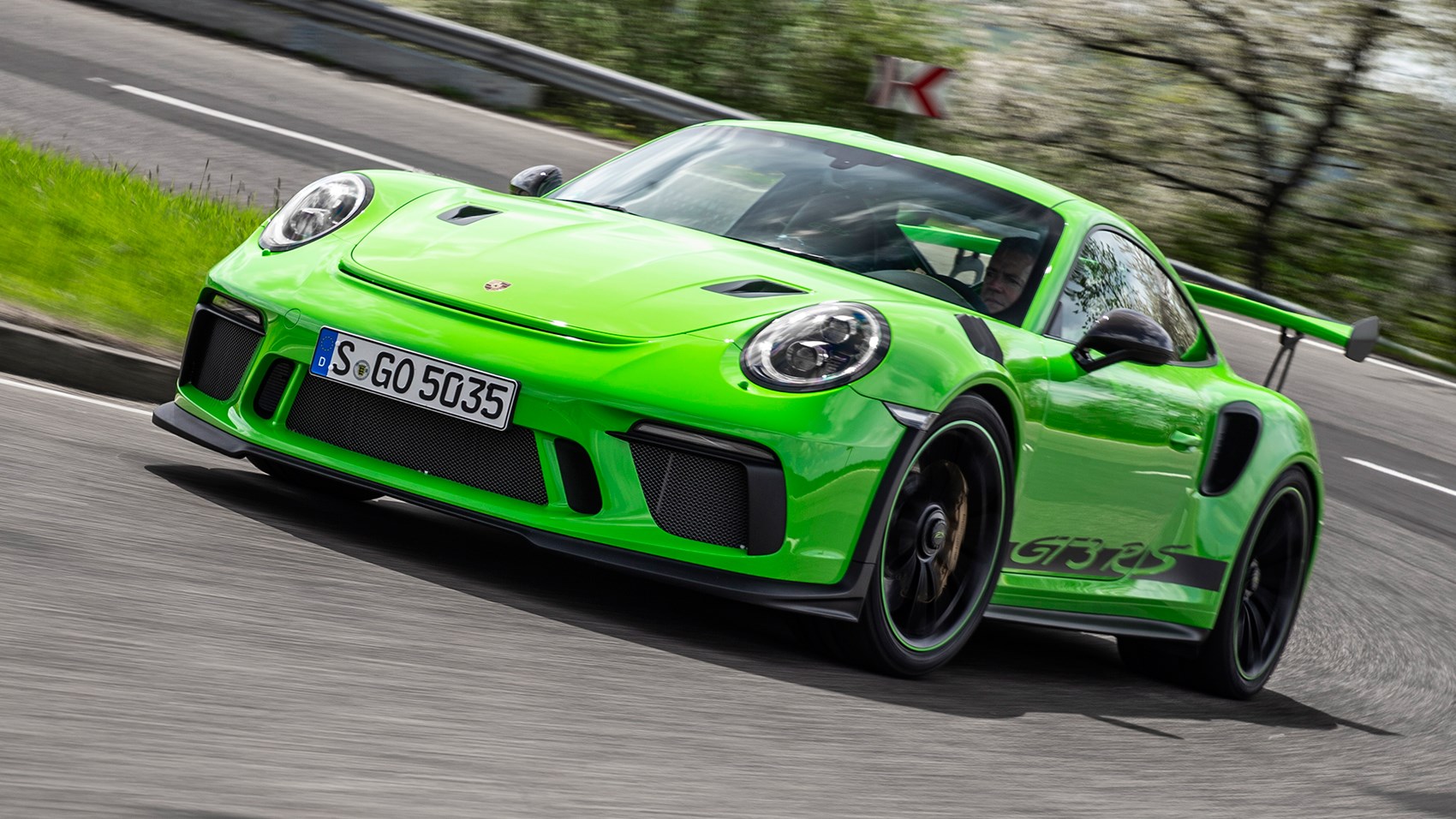
This is also a curtain-call for the outgoing generation of the Porsche 911 before the all-new 992 family arrives later in 2018. This is the final 991 model to get a ‘991.2’ update, and it’s not a bad way to bow out.
What makes a GT3 RS different from a plain vanilla 911 GT3?
The most obvious difference is its body, which is wider, has more holes in it, and wears bigger spoilers. The body is actually shared with the 911 Turbo, hence the cooling cutouts in the rear arches, originally designed to chill the Turbo’s intercoolers but here in the GT3 RS to feed the giant airbox at the rear. Because some of the ducting travels through the body in white, the induction noise is quite something. Its front track is wider than the Turbo, and it has a racecar-like raked stance, courtesy of its new 21-inch rear wheels and 20-inch fronts.
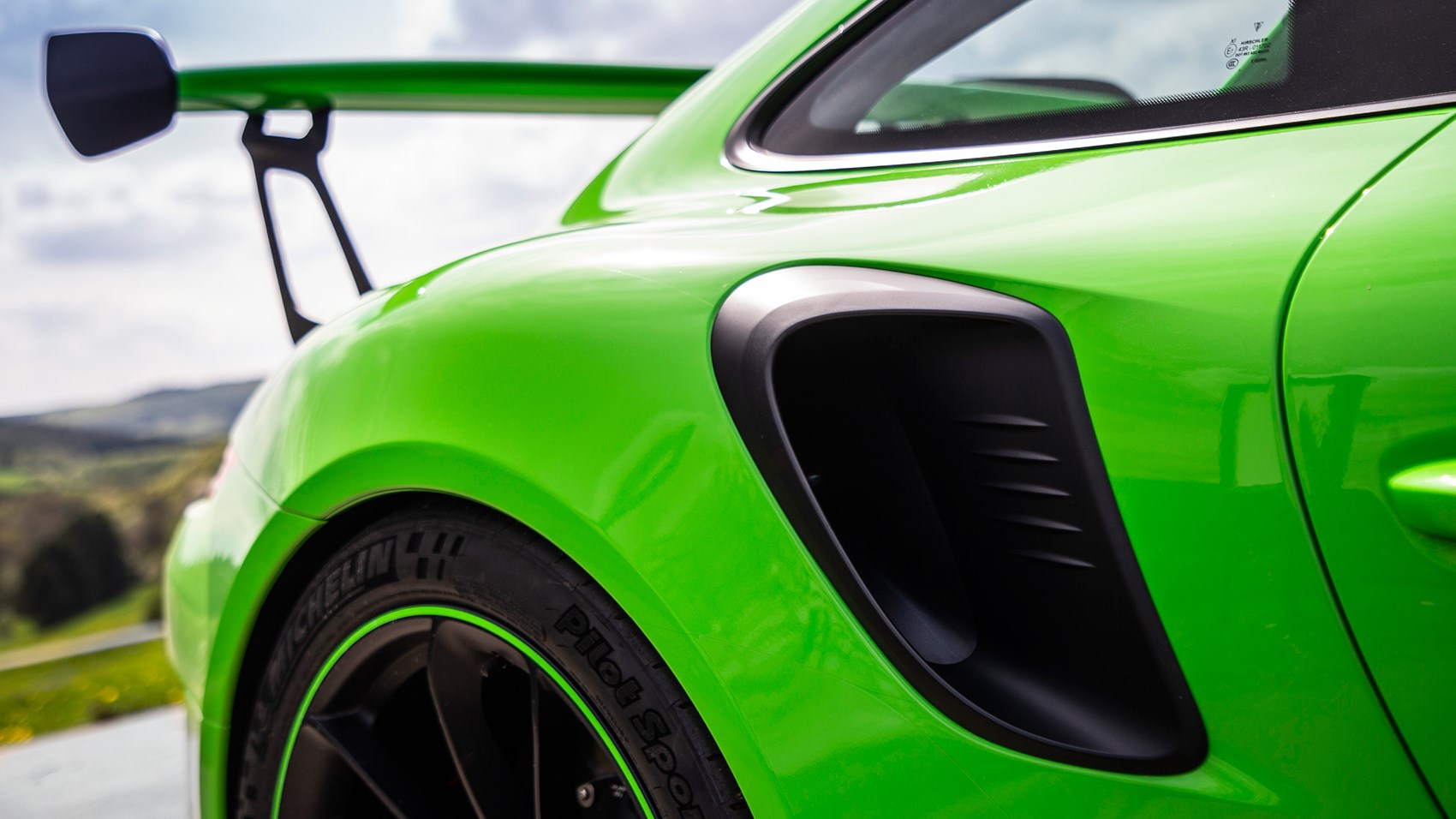
The suspension is far more focused than the regular GT3, the aero kit generates much more downforce, and there’s yet more power and torque from the 4.0-litre flat-six, which itself is closely related to the racing engine used in the 911 GT3 Cup car.
And what’s changed compared with the previous 991.1 GT3 RS?
The new 991.2 GT3 RS’s predecessor was the 991.1 GT3 RS of 2015, a car that ran away with CAR’s 2015 Sports Car Giant Test. It was so accomplished a sports car that at the time it seemed difficult to imagine how Porsche could improve upon it, but its engineers have developed a variety of incremental updates that add up to a big whole.
- Aero: 7-8% more downforce, helped by a new diffuser, wider skirts, broader front spoiler lip and new rear wing endplates and supports. The same wing as the GT2 RS, it sits higher than the 991.2 GT3 RS
- Engine: 20bhp power increase to 513bhp, 7lb ft increase to 347lb ft. The gains are partly from a new exhaust, valvegear, induction system and electronics – which lift the redline to the magic 9000rpm mark (previously 8800rpm).
- Decals: Script stickers along the flanks standard on the 991.2 GT3 RS – just in case onlookers were in any doubt…
- Bodywork: New tail-lights at the back, new LED indicators at the front. All bumper vents reshaped to better channel air to front rads and brakes, and extract it at the rear. New NACA ducts on bonnet to cool brakes.
- Exhaust: Titanium silencer and tailpipes. Sounds great, and turns a deeper shade of blue with use.
- Suspension: Rose-jointed throughout (apart from one link on the rear-wheel steering system). Spring rates are double that of the previous RS on the front and up by 50% at the rear – similar to the GT2 RS.
- Equipment: Latest 992-gen touchscreen inside.
What’s it like to drive?
Pretty special, to put it mildly. Not many cars engage your senses like the GT3 RS, or have the same feeling of precision to their every move.
The steering response is instant, without a hint of slack, the tyres responding instantaneously to your inputs. The electro-mechanical steering is brim-full of feel, too – long gone are the days of Porsches with numb electric power steering. And the wheel itself feels great, narrow in diameter and covered in Alacantara.
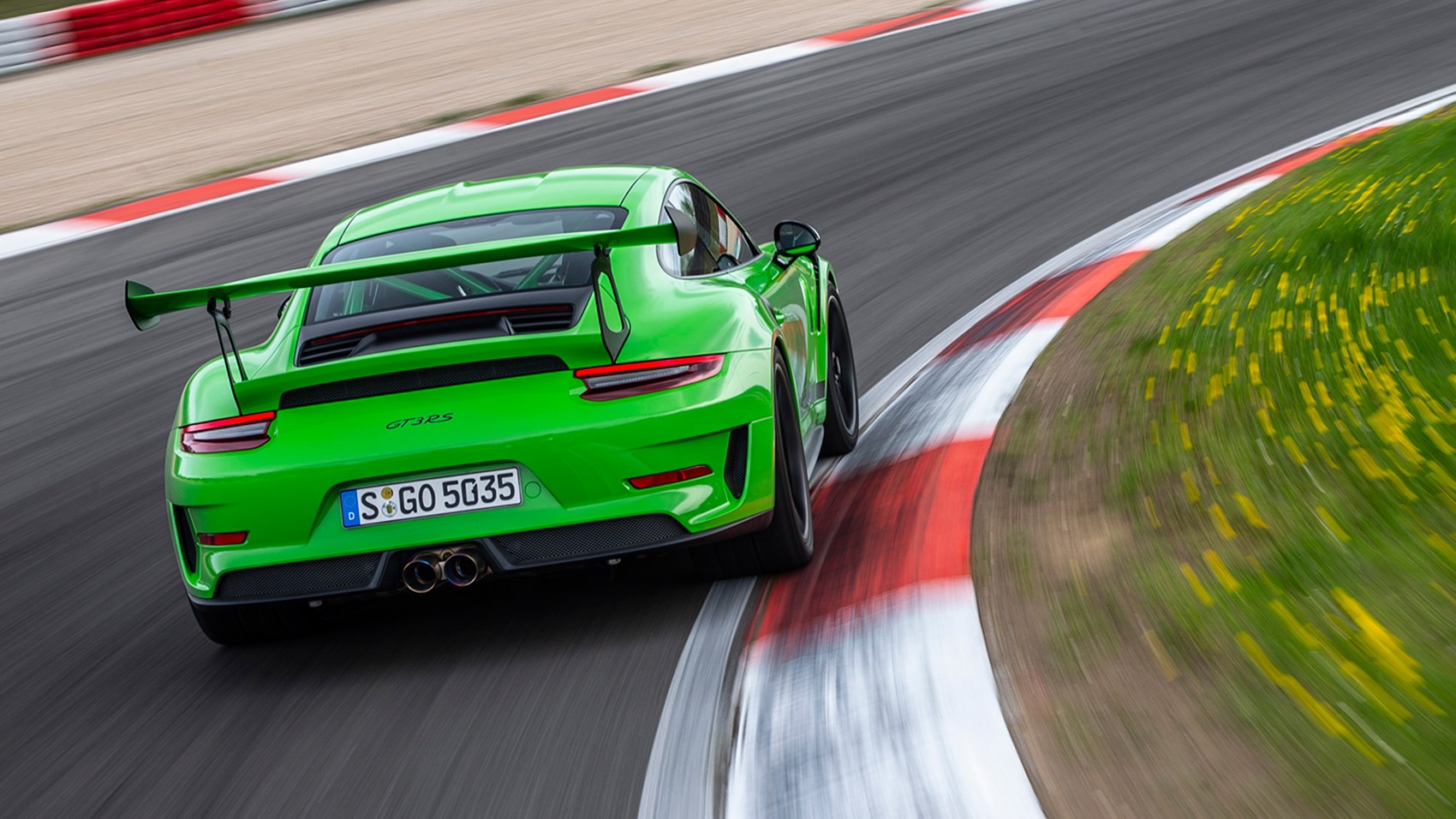
The flat-six sounds rattly at idle, but really quite incredible as the revs climb. Once it’s warmed through, if you ever find the space to reach the 9000rpm redline, it’s a rush you’ll keep chasing again and again, like an rpm junkie. The sound it makes beyond 8500rpm or so, a metallic-edged howl, is unforgettable.
Like various other 911s, the GT3 RS uses rear-wheel steering, but it’s been thoroughly recalibrated for the latest car. It works spookily well. In some cars four-wheel steer can feel odd, the amount of lock you put in not quite matching up with the car’s overall yaw rate. But the GT3 RS always feels entirely natural and intuitive, the main manifestation of rear-steer an occasionally floaty (but not unpleasant) feel to the steering in medium speed corners, and the fact that you rarely need to move your hands from quarter-to-three on the wheel, no matter how tight the corner. It has an uncannily small turning circle for a 4.5m-long car, too.
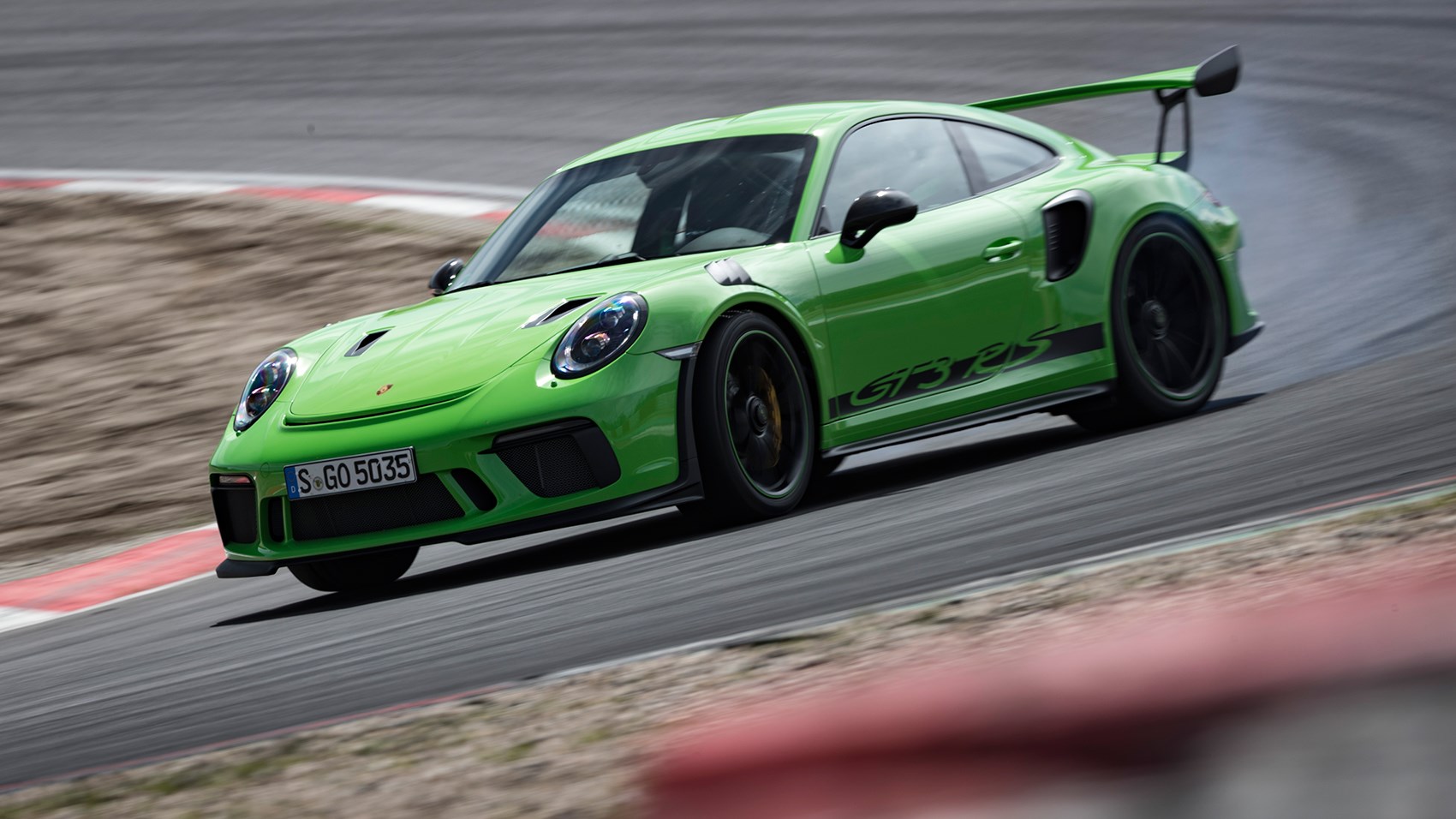
There really is a lot going on behind the scenes in the GT3 RS to get you into, through and out of corners as quickly, stably and precisely as possible. Apart from the four-wheel steer there are adaptive dampers, adaptive engine mounts (stiffer to transmit forces more effectively when you’re going for it, softer to reduce vibration when you’re not), an electronically controlled locking differential with torque vectoring, and all that aero, with usable downforce getting to work from comparatively low speeds. Not to mention the mechanical grip from those simply enormous tyres.
Although the GT3 RS is so fast it can consume the road ahead like a video set to fast-forward, you can enjoy it at a gentle pace too, enjoying the sound, the touchpoints, being plugged into all that feedback. And you never miss an apex because the steering is so good.
There’s a huge level of front-end grip on the way into corners, and equally impressive traction on the way out, and a feeling of absolute precision in between. On a circuit the GT3 RS must have some chinks in its armour, somewhere (although given it’s lapped the Nordschleife in under seven minutes, maybe not) but on the road it’s mighty.
Can you get the Porsche 911 GT3 RS with a manual gearbox?
No. The regular GT3 was available with a choice of either six-speed manual or seven-speed dual-clutch PDK, but the GT3 RS is available with the PDK ’box only. It’s designed with an eye on laptimes, and the PDK’s both-hands-on-the-wheel/perfect-shifts-every-time remit fits the brief.
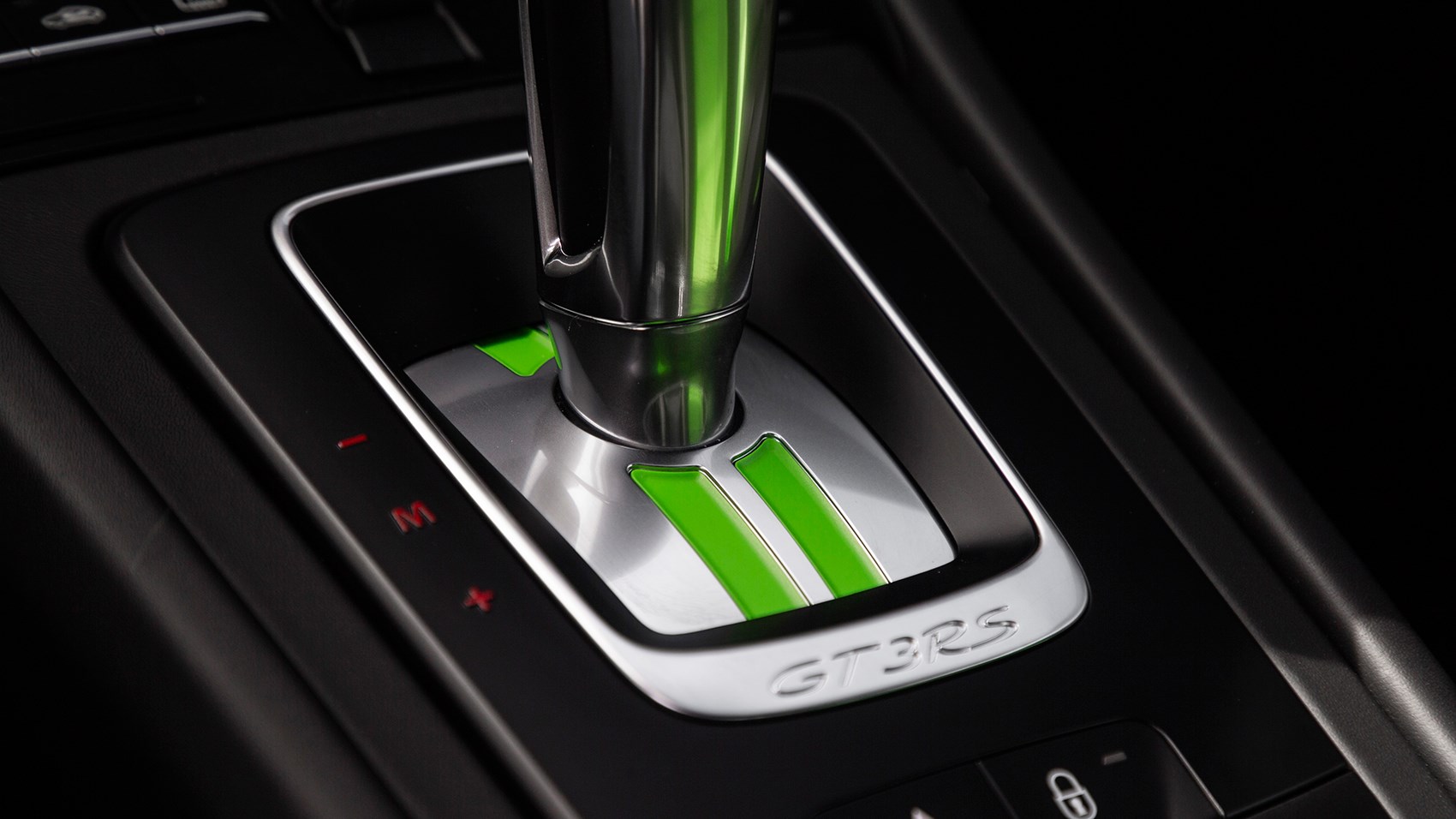
You’re unlikely to miss the manual – which seems a funny thing to say when the regular GT3’s perfectly weighted gearshift and pedals are such a thing of joy to use – but the remapped seven-speed PDK dual-clutch gearbox is an emotive thing in itself in the RS. There’s great feedback from the paddles, upshifts at high revs dispatched with a metallic ping and downshifts so crisp they feel barely any slower. Its ratios feel perfectly suited to British B-roads, neither too long nor too short.
And it’s great in auto mode, too, one of those rare self-shifting gearboxes that actually chooses the right gear at the right time.
Is it actually a usable road car?
More so than it appears; the weight-saving thin glass and deleted sound deadening makes the cabin a little echoy, gravel rattles in the arches as you pull away (like the regular GT3), and the large tyres get noisy on coarse surfaces but it’s not unbearable.
The 991.2-spec infotainment system works well enough, and there’s decent luggage space in the ‘frunk’ (the CFRP lid of which is so light, you fear you might throw it over the car when you first lift it). You could conceivably get bags in the back amid the half rollcage, but extracting them might be trickier, like a ship in a bottle in reverse. The rollcage is a no-cost option for the RS, but a big part of its racecar-with-numberplates appeal, as well as contributing to overall torsional rigidity.
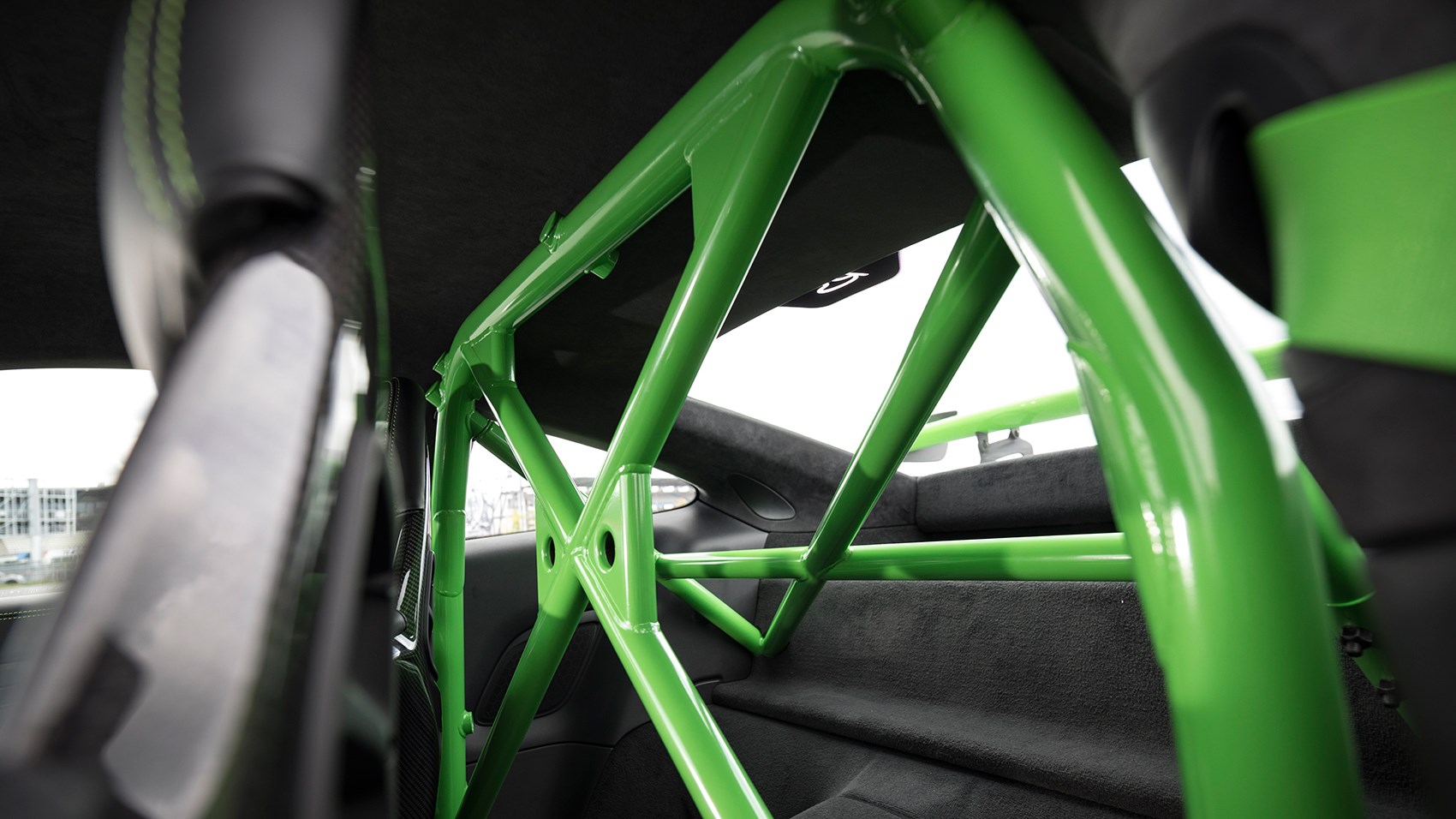
Ride quality is surprisingly supple, despite the RS’s mission to be as fast as possible around a circuit, and having less of a focus on comfort than other GT models. In the stiffest setting the dampers really are firm and body roll is conspicuous by its absence, but in the softer of their two settings the ride is actually pretty amenable.
The interior is stripped of non-essentials – even the doorbins have been replaced with nets – but it has just enough creature comforts, and the sense of quality and fit and finish is just as impressive as the 911’s more luxurious variants.
There are some lovely design details, not least the seats, one-piece carbon shells that are much comfier than they look.
Is the Porsche 991.2 GT3 RS sold out?
Technically no, but good luck getting one. It’s described as a model with extremely limited availability, but there’s no definite limit on production numbers, and it may continue to be built for a while after 992 production has begun.
Anything else I should know?
The GT3 RS weighs around 1430kg, but the optional Weissach pack can cut weight by as much as a further 28kg with innovative composite anti-roll bars and suspension components, a CFRP roof to replace the magnesium panels ordinarily fitted to the RS, a similarly flashy carbon weave finish for the bonnet, and the option of forged magnesium wheels.
Ninety per cent of GT2 RS customers are said to have chosen the Weissach pack, so it’s likely to be a popular option for the GT3 RS.
Verdict
The Porsche 991.2 GT3 RS is a spectacular engineering achievement.
Although the regular narrower-track, simpler GT3 is a special driving experience in itself, driving the GT3 RS is like watching a video through a 4K hi-def TV instead of a tube set. It’s the most vivid of driving experiences, a car that responds as fast as you can think.
The GT2 RS’s sledgehammer power delivery gives that car a slightly different personality, but it misses out on the GT3 RS’s spine-tingling naturally aspirated exhaust note – and there can’t be many people who’ll drive a GT3 RS and wish it were faster.
If ever a six-figure sum can seem like a bargain, the GT3 RS’s £140k asking price does – especially given the likelihood that its value will increase on the second-hand market. But owners should keep their cars and enjoy them. It’s difficult to think of a better driver’s car on sale today.